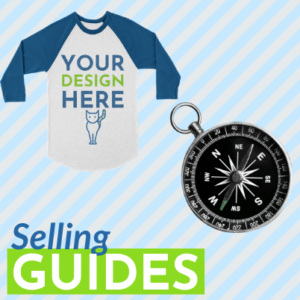Are you Harnessing the Power of SEO? Get the SEO Checklist for Online Stores
Social media & email marketing may win sales, but you’re leaving money on the table if you’re not incorporating SEO into your online store. Studies show 44% of people start their online shopping with a search engine query, & the top traffic source for all websites is also organic search.
When done correctly, SEO is a powerful way to snag customers as they enter the buying journey. But it’s not just about attracting any audience; you want targeted buyers who are already looking for what you’re selling. SEO can also raise brand awareness & lower your overall marketing costs. Instead of paying for ads & social media managers, a rock-solid SEO strategy can attract the organic traffic you’re looking for.
The downside to SEO is that it does take time to gain momentum before you see the impact. Combining SEO with your ongoing marketing efforts is an effective way to keep your online store growing as you build a foundation for organic traffic. Ready to try it for yourself? Here’s how to get started.

1. Keyword Research
Keyword research is the foundation of a good SEO strategy. There are free & premium tools that help narrow down your keyword options, including Ahrefs, SEM Rush, & Uber Suggest. But it’s important to tread lightly. Going after highly competitive keywords like “men’s T-shirts,” or you’ll go up against every ecommerce retailer on the planet.
The sweet spot is finding a keyword with at least a few hundred searches a month with moderate to low competition. Each tool will show you how keywords rank & compete, giving you a better idea of what’s possible. Long-tail keywords are also a great way to cut through the online noise & attract more customers. Long-term keywords are longer niche words that contain three to four words. Instead of T-shirts, you might look for “unique T-shirts for women.”

2. Google Trends
Google Trends is powered by Google & shows trending keywords & topics. For example, you can enter “customized throw pillows” to see the search trends over time. The goal is to see some kind of activity in the “interest over The goal is to see some kind of activity in the “interest over time” section. If there’s no data available, you need to find other keyword options or product ideas. But even some activity can help you identify which months you’re more likely to see interest in your customized pillows & when to push out your marketing campaigns.
3. On-page SEO
On-page SEO refers to all the ways you can improve your search results from your blog posts, product pages, & anything else that happens on your site. If you’re brand new to search engine marketing, on-page SEO can feel intimidating. But it’s actually straight-forward. Here’s where to start:
Title Tags: Craft unique & descriptive title tags for every page of your website & include target keywords whenever possible.
Meta Descriptions: Write compelling meta descriptions with keywords that encourage click-throughs to buy your products.
Header Tags: Use header tags (H1, H2, H3, H4) to structure your content & include keywords naturally.
High-Quality Content: Create informative & engaging product descriptions, blog posts, gift guides, & other content that provides more value to your audience.

Image Optimization: Optimize your images by reducing file sizes & using descriptive alt text. The alt text helps search engines & visually impaired people understand the context of the image.
Cross-Link to Internal Pages: When appropriate, link between pages & blog posts to make it easier for shoppers & search engines to navigate your site.
Start with one or two items on this list until you get comfortable with the process before moving onto each item.
4. Site Speed & Performance
Slow, sluggish websites will cost you traffic & sales conversions. Studies show that pages taking longer than six seconds to load lose about 1 of every 2 visitors. You can help speed up your site’s speed by reducing your graphic & image sizes & getting rid of any plugins that you’re not using or that are unnecessary.
Fortunately, most ecommerce hosting providers, from WordPress to Shopify, offer plugins, apps, or tech help to optimize your site. If you use a site like Etsy or eBay to sell, you’re already on a platform that prioritizes speed & making sure your online store stays up & running.

5. User Experience (UX)
It’s easy to get caught up in online traffic & site speed & let the user experience fall to the wayside. Also called UX, a user-friendly website is a more pleasurable way to shop in your online store, but it is also important for your search engine ranking. Make sure your site is easy to navigate, uses clear calls to action, & is easy to read & understand. For example, tiny fonts on fluorescent backgrounds are difficult to read & won’t do you any favors in keeping visitors on your site.
6. Monitoring & Analytics
SEO requires regular monitoring & analysis to optimize your marketing efforts. If you do nothing, you may still get organic traffic from creating great content with the right keywords. But when you study what’s working & what’s not in your analytics, you can double down on your marketing efforts & get faster results.
Set up Google Analytics & Google Search Console to track your website’s performance. Your online selling platform, like Shopify, should also offer a user-friendly dashboard to monitor your traffic sources. It can take time to understand how to make the most of your analytics, so start by seeing how your products perform & which content, such as a valuable & informative blog post, brings in the most traffic.

7. Content Marketing & Backlinks
Backlinks link from someone else’s website or publication back to your site. It can dramatically improve your SEO efforts & raise brand awareness. But it takes some time & effort to create high-quality content & buzz to get those links & shares, making content marketing an invaluable part of your SEO campaign.
Content marketing is all about fostering a relationship with your audience through valuable content. In other words, don’t write a few hundred words with tons of keywords stuffed into it & no real value or information yet expect your audience to want to engage with it or share it. Instead, content marketing is the core of your SEO strategy & incorporates keywords, value, product information, & helps set the tone of your brand personality.
SEO is always evolving & has lots of moving pieces. But the good news is that you don’t have to master it all or even tackle every aspect to see results. Instead, focus on the areas you can improve, such as adding more highly relevant content with thoughtful keywords & optimized images. As you get comfortable with the strategy & see results, you can expand to incorporate more SEO best practices into your online business.
How do you use SEO in your ecommerce business? Let us know by leaving a comment below!


